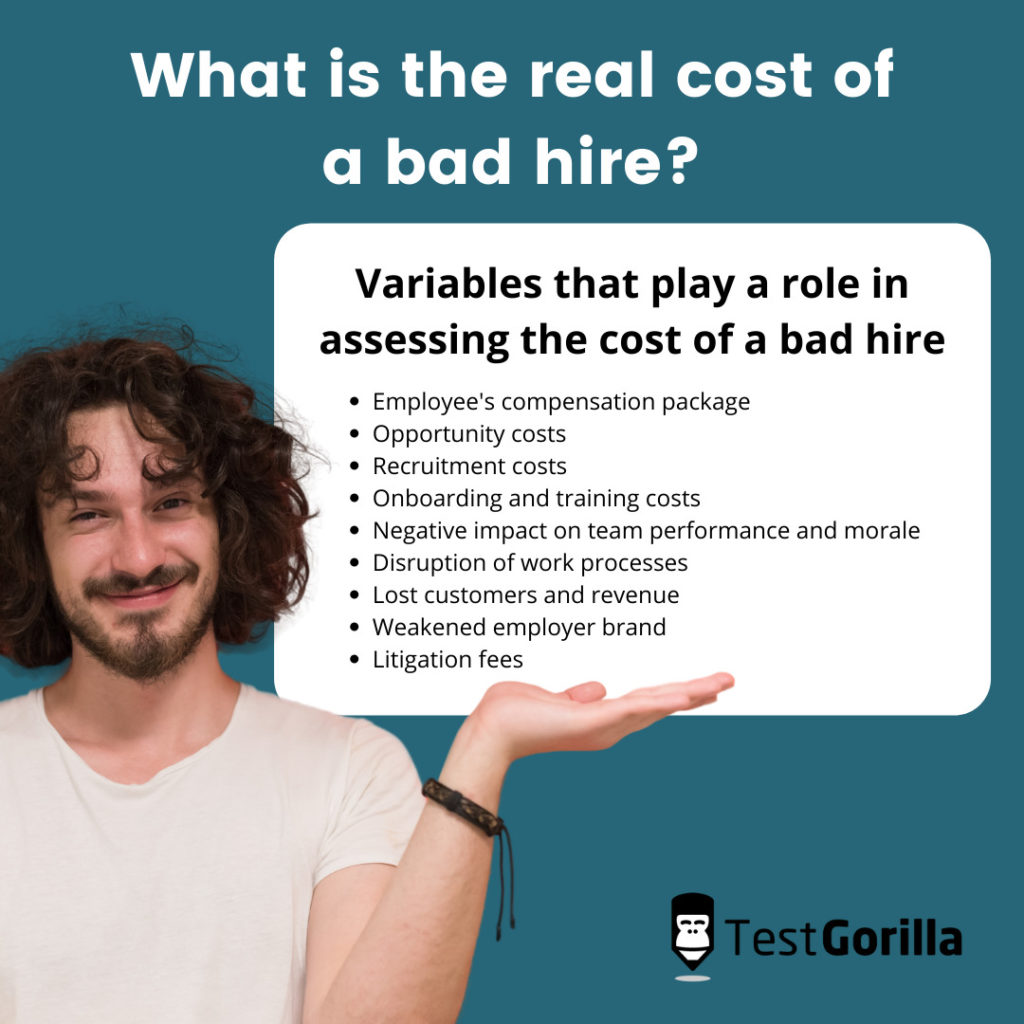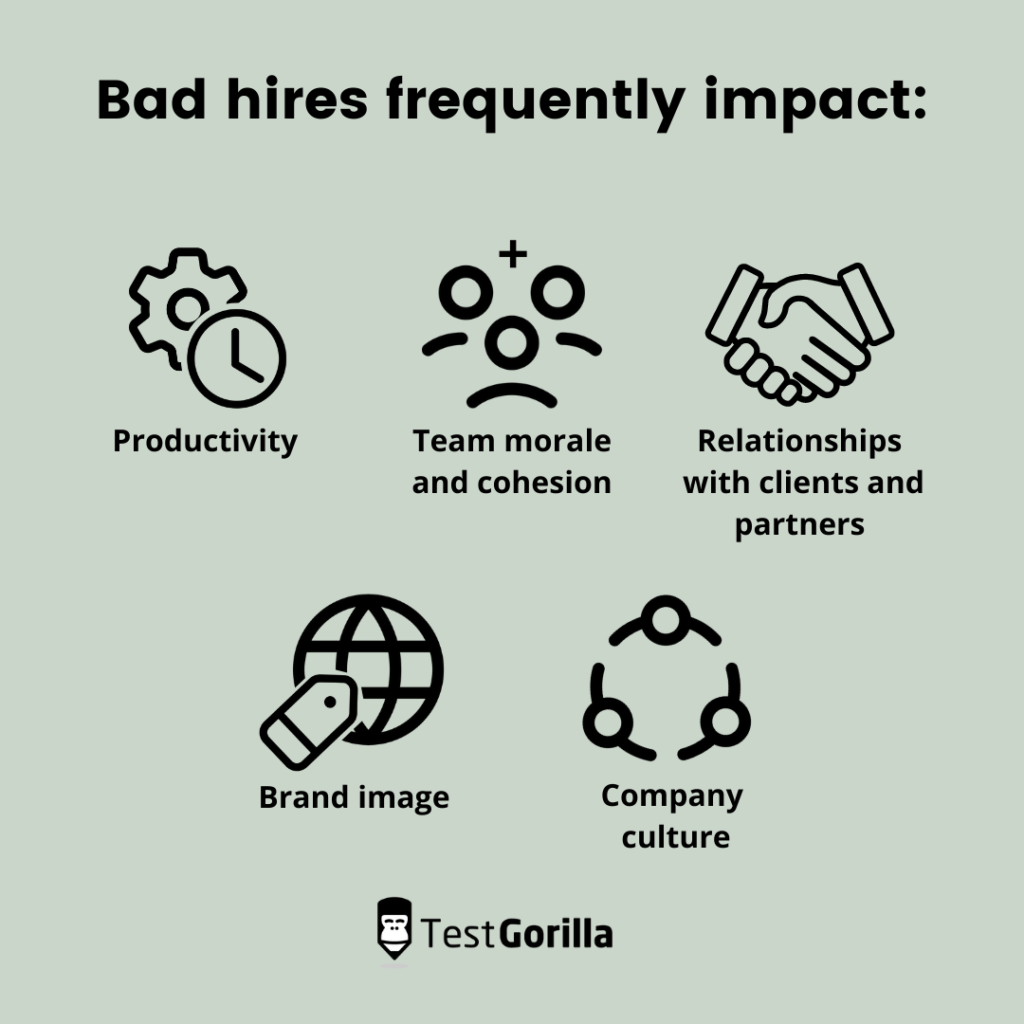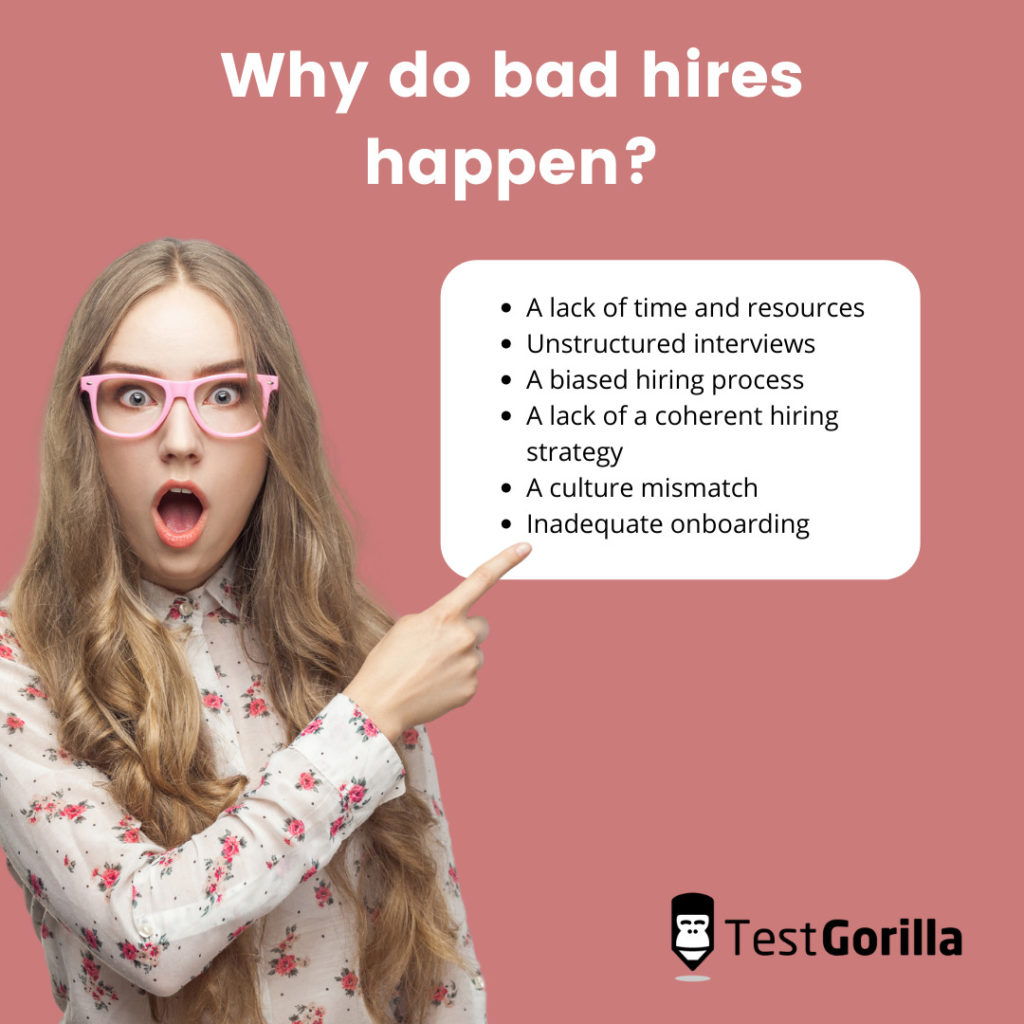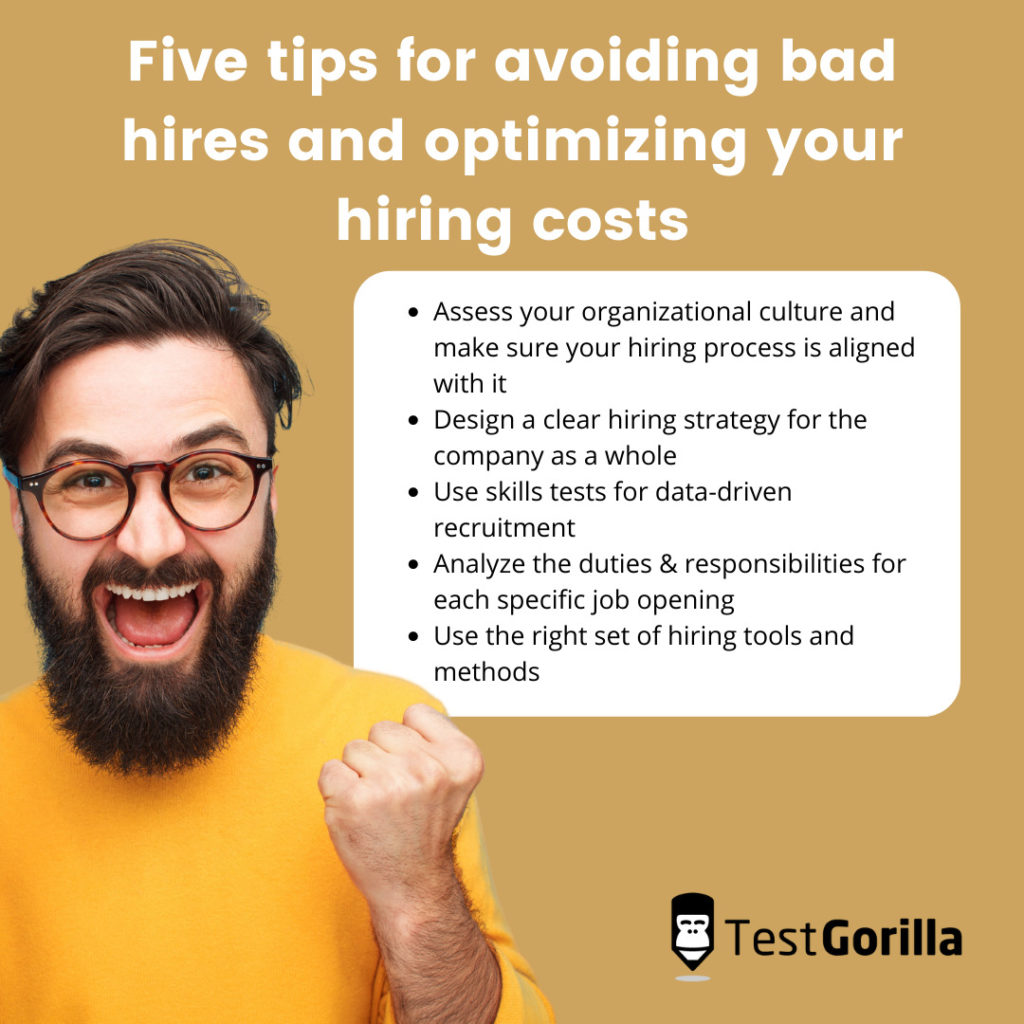The cost of recruiting, hiring, and onboarding a new employee can be as much as $240,000, according to Jörgen Sundberg, CEO of Link Humans, an employer branding agency in London. Recruiters often don’t realize how many resources are wasted by the turnover of even one employee. And recruitment mistakes are not something that happens rarely: 74% of employers admit they’ve hired the wrong person for a vacancy. That’s nearly three out of every four employers!
Of course, hiring a bad employee will always remain a business hazard, as will employee turnover. Sometimes unexpected situations happen in people’s lives and they have no choice but to move to a different town or country, or perhaps they need to take care of someone close to them.
But most cases of a bad hire can be avoided by well-trained HR professionals, equipped with the right recruitment tools. According to a CareerBuilder survey, 33% of the employers who recruited a bad employee say they knew they didn’t have all the right skills, but they thought they could learn quickly. Thirty percent wanted to hire someone quickly, and 29% were focused on the skills of the candidate, overlooking their attitude. These are all mistakes that could be easily avoided.
To help you optimize your company’s profits and save yourself the cost of a bad hire, we’re going to delve into the matter and offer you some practical solutions, advice, and resources.
This article will help you understand:
What the consequences of a bad hire are
The five steps you can take to avoid a bad hire
Table of contents
What variables play a role in assessing the cost of a bad hire?
There is an ongoing debate over calculating the average cost of a bad hire. It’s not an easy task to tackle because there are many variables, such as:
The employee’s compensation package. The compensation package, or the combination of salary and benefits an employee receives, is the first thing to take into account when calculating the cost of a bad hire.
Opportunity costs because you failed to hire a better candidate. This is the foregone benefit that would have been derived if you had made a different choice when you were recruiting employees.
Recruitment costs for hiring a replacement. When you lose an employee, you need to find someone else to take their position, and this usually has to happen fast. According to an SHRM HR benchmarking study, the average cost-per-hire is $4,683. Plus, the average time to hire is 44 days. When you’re dealing with employee turnover, you usually want to speed up the hiring process for the replacement in an attempt to cut your company’s losses. This means you are going to invest more money and effort into recruiting someone for the vacancy.
Onboarding and training costs for replacement hires. When you find someone else to fill the position, you will probably need them to pick up whatever projects your bad hire was working on, and do that fast. This means you need to speed up the training process, which always comes with a price. It’s costly to onboard the new employee faster, so they can feel at ease in the company and reach their maximum potential quickly.
The negative impact of bad hires on team performance and morale. Unmotivated employees often affect other workers negatively. One bad apple spoils the whole barrel, right? And if the bad hire isn’t aligned with the company’s values, others might become less motivated to complete their tasks, which leads to a decrease in productivity and performance.
The disruption of work processes due to incomplete or incorrectly handled projects. Increased productivity is often a group effort, which is, in essence, a chain reaction: when more than one employee is working on a project, their performance affects their teammates’ performance, too, and determines the quality of the final result. A bad hire often leaves incomplete projects or they are handled so poorly that they must be redone.
Lost customers and revenue. Your employees are your ambassadors to the public. A bad hire who doesn’t represent your company’s standards and values can make the wrong impression on people. They may start thinking, “If someone like this works here, there is probably something wrong with this place.”
Weakened employer brand. Poor cultural fit can cost an organization around 60% of the person’s annual salary. If your employees aren’t sharing the company’s core values, this can damage the brand and cost you the loyalty of your clients.
Litigation fees. If you have to fire a bad hire because they are decreasing productivity or affecting their team’s performance negatively, they might choose to sue you. The legal fees can add up quickly.
Want to get more value from your recruitment?
Our complete blueprint will provide the tips, strategies, and insights you need to maximize your recruitment ROI.
How is the cost of a bad hire calculated?
Having that many variables means that the best way to figure out the potential cost of a bad hire is by calculating it yourself. To make a sample calculation, you need to:
Multiply the hours that all hiring team members have spent reviewing resumes, conducting interviews, and doing work connected to the job position, by their hourly pay.
Add the cost of advertising for the position.
Add the cost-per-hire of the different software tools you’re using.
Add the sum to the cost of lost productivity. This might be a bit more difficult to assess, but if you look at your KPIs, you should be able to estimate.
Add the monthly compensation package of the bad hire, multiplied by the number of months they’ve spent at the company.
Add onboarding and training costs.
And there you have it. Keep in mind this only covers the basic cost of a bad hire and there might be other expenses to take into account.
The best insights on HR and recruitment, delivered to your inbox.
Biweekly updates. No spam. Unsubscribe any time.
What are the consequences of a bad hire?
To make your calculations more precise, it’s important to learn about the hidden costs and financial consequences of a bad hire. Hiring a bad employee can affect your company in more ways than you might notice at first glance and it’s more difficult to calculate the costs. Let’s dig deeper into that.
Bad hires frequently impact:
Productivity
Is your hire bad because they lack communication skills? Maybe they are not good at teamwork? Or maybe they are snappy and don’t perform well under pressure?
Things like that don’t go unnoticed by the team. It makes other people want to work with them as little as possible or avoid completing their tasks. This lowers productivity even more than only one underperforming employee would.
Team morale and cohesion
One of the consequences of a bad hire is an increase of stress for other employees. Workers don’t want to deal with problematic behavior and they often end up having to pick up the bad hire’s projects, doing extra work to keep things on track. That may result in a higher employee turnover, which will cost your company a lot.
Relationships with clients and partners
Relationships with clients and partners will also be affected. And this is not just about clients you already work with, but also about new ones. Dissatisfied customers and partners may write bad reviews or give negative feedback about their experience with your company, which can have disastrous consequences on your performance. According to Inc., it takes about 40 positive experiences to compensate for the effect of a single negative review.
Your brand image
The reputation of a company is something you build over time. It’s important to protect your and your employees’ efforts to maintain the brand image, and this may prove to be difficult when you hire someone who isn’t aligned with your values.
Your company culture
Company culture is one of the core elements of each organization. Employing someone who doesn’t have the same goals and doesn’t aspire to maintain the same attitudes can undermine all the work you have done so far to build a cohesive company culture. It may affect other workers, clients, and partners, and make people doubt the integrity of your organization.
Why do bad hires happen?
Knowing how significantly bad hires can impact your company’s productivity highlights the incentive to look into why they happen in the first place. There are a few common reasons:
A lack of time and resources
Companies are often in a rush to hire for an opening and lack the patience to go through tens or sometimes even hundreds of applications. When you can’t afford to put in the necessary time, it’s common to make mistakes or overlook things, hoping it will all work out for the better.
To streamline the hiring process and reduce the time-to-hire, you can implement assessment tests in your hiring process. Pre-employment tests help you shortlist the best applicants more easily and accurately assess performance potential and cultural fit.
Unstructured interviews
Sixty-nine percent of companies identify poorly conducted interviews as the reason they made a bad hire. Being able to conduct a structured interview makes the hiring process more efficient.
Structured interviews include pre-determined questions that you ask every candidate in a particular order and then assess their score. This gives you a more objective view of their skills and how fit they are for the position.
How do you perform a structured interview to reduce the risk of a bad hire?
Here are some tips to perform a structured interview:
Explain to the candidate what you’re going to do before you do it. For example, if you are going to start taking notes, say so beforehand. This helps put people at ease, which makes interviews more efficient.
Ask questions that require a concrete answer. Here are some possible examples: Could you provide an example of when you used [a particular skill] and achieved positive results? Can you identify a moment in which you overcame a mistake in your previous role? What did you do to solve the issue? Explain which approach you would take to overcome [a challenge expected within the role].
Determine a particular order in which to ask questions. This really makes a difference and helps minimize your own bias.
Here, you can read more about structured interviews.
A biased hiring process
Discrimination in hiring, disparate impact, and disparate treatment remain huge issues. Bias is often unconscious, which is why it’s so difficult to get rid of. And the positive effects of implementing a hiring process without bias are big: according to McKinsey & Company, they include better business performance and a more innovative decision-making process, which lead to higher profits.
A lack of a coherent hiring strategy
A coherent hiring strategy helps you elevate your brand and hire the best talent by engaging individuals who can understand your company culture, values, and objectives, and align with them.
A culture mismatch
Nearly one in ten respondents to a CareerBuilder survey, quoted by SHRM, said the person they hired didn’t perform sufficiently well because the company did not properly convey its brand or culture to the new hire.
Inadequate onboarding
Sometimes, bad hires aren’t necessarily a mismatch but simply the result of inadequate, inconsistent, or unstructured onboarding. Onboarding isn’t a short-term task, but rather something you work on consistently.
Many things impact the quality of the process, such as underutilization of onboarding practices, focusing only on processes and paperwork, or a lack of technology that automates and organizes it.
Five tips for avoiding bad hires and optimizing your hiring costs
The best way to not have to calculate the cost of a bad hire is to avoid recruiting one. Here are five tips on how to do that.
Assess your organizational culture and make sure your hiring process is aligned with it
Organizational culture, also known as company culture, is the set of values, behaviors, and practices that the employees of a company share. It plays an important part in making the workers feel comfortable and at ease, and therefore be more productive.
It can be difficult to define such a broad term, but a strong company culture will help you attract the right candidates for your company and minimize the chance of employee turnover. That’s why putting resources and time into defining and describing your company culture is important: having a clear strategy about cultural assessment and improvement can help you avoid bad hires.
Design a clear hiring strategy for the company as a whole
Developing a clear hiring strategy minimizes the chances of a bad hire. You can start by clarifying your company’s hiring objectives for the next quarter or year, defining the different positions you need to hire for, and creating a comprehensive plan for all of them.
Use skills tests for data-driven recruitment
Assessment tests are really helpful for hiring the right candidate. They help you:
Get an in-depth evaluation of someone’s skills and weaknesses
Compare candidates
Reduce hiring bias
TestGorilla’s library features many pre-employment tests for different positions and skills, as well as personality and cultural fit.
Analyze the duties & responsibilities for each specific job opening
Being more aware of what you need for a certain position helps you better assess candidates and their skills. The clearer and more accurate the job descriptions you post, the more fitting applications you will receive. Keep in mind what you’re looking for when conducting interviews and reviewing the results: there are things you shouldn’t compromise on, while others are simply nice to have.
Use the right set of hiring tools and methods
To avoid bad hires, you need to use the right set of recruitment tools, methods, and techniques. Here are the most important ones:
Pre-employment tests. Tests can help you assess the candidates’ skills, cultural fit, and personality fit without bias. You can choose between hard skills tests, such as programming and language proficiency tests, role-specific tests, cognitive ability tests, and situational judgment tests.
Structured interviews. After carefully analyzing the duties and responsibilities for the job opening, you’ll have an accurate idea of what you’re looking for in a candidate and be able to create a structured interview template. This way, you’re defining highly targeted questions, allowing you to choose the best fit for your company.
Job simulations. You can assign your candidates a task that is designed to give you a preview of how they would perform on the job. Job simulations are becoming increasingly popular among employers.
Job fit assessments. A comprehensive job fit assessment can determine whether a candidate has what it takes to meet, or even exceed, the demands of a role.
Bad hires are avoidable, but you need the right hiring strategy
If you implement the right set of hiring methods and tools in your hiring process, you’ll see that bad hires are avoidable. But you need the right strategy in place.
Calculating the cost of a bad hire is the first step to taking action towards minimizing the risk of mis-hires. Doing so can make recruitment more efficient and increase your company’s productivity.
You've scrolled this far
Why not try TestGorilla for free, and see what happens when you put skills first.



















